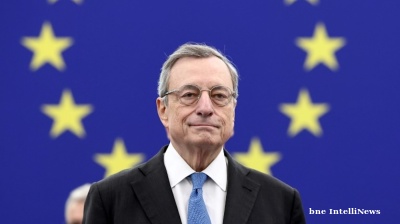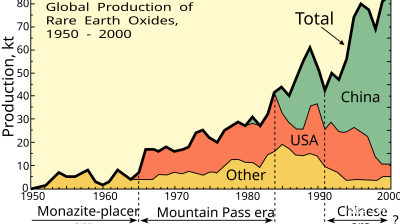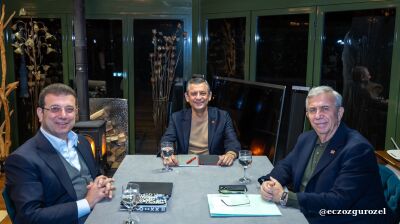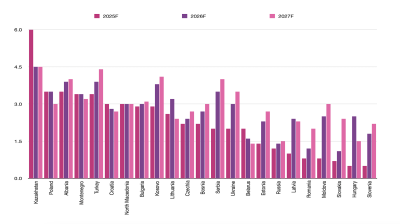Slovaks head to the polls on September 30 in an early election that is both vital for the country’s future and perhaps the future of Central Europe.
The country’s scandal-ridden former premier Robert Fico – who has doubled down on his image as a pro-Kremlin populist and moved closer to Hungary’s strongman Viktor Orban – is narrowly in the lead position, with support oscillating around 20% in the final opinion polls published on September 27.
His main opponent, the liberal Progressive Slovakia party, led by vice-president of the European Parliament Michal Simecka, has gained ground in recent weeks to around 18% amid voter polarisation, and now looks better placed to form a majority coalition.
With more than 25% of voters still undecided, and the interest in the election of younger voters – who favour PS – growing from 52% in April to 68% in August, plus a record number of Slovaks living abroad (who also favour PS) registering for the vote, it is realistic that, with a strong turnout, PS could push ahead of Smer in the final days of the campaign and steal a victory.
This would allow President Zuzana Caputova, a former party member, to give it the first chance to form a government.
If this happens, PS will face another daunting task: forming a majority-backed coalition with parties whose agenda is distinctly more conservative than PS’ mainstream European liberalism.
If successful, Simecka could become the most liberal prime minister in the V4 region, steering Slovakia into the core of European politics while its neighbours remain on the fringes.
Who finally emerges triumphant in Slovakia could depend on which of the smaller parties pass the 5% threshold to enter parliament, with four current parliamentary parties teetering on the edge of failing to qualify, and several other parties just under the cut-off.
It could also depend on the stance of Robert Pellegrini, Fico’s former lieutenant, who has formed his own Hlas party and now sits in third place after being squeezed by the two leading parties. Pellegrini had indicated he preferred not to co-operate with Fico, but appears to have veered back to him in recent weeks.
Whoever is given the first chance to form a government, Slovakia is in for several weeks or even months of negotiations, with some commentators predicting that no-one will succeed and the country will have to have another election.
Even if a majority government is formed, it is certain to be a coalition of at least four and perhaps as many as six very different and fractious parties. This is likely to perpetuate the political turmoil the country has experienced over the past three and a half years under the centre-right government that replaced the previous Smer government.
Those in between
The campaign has largely been fought on social media and in TV duels. It has been quieter than expected, though it has had theatrical moments, such as the scuffle between former premier Igor Matovic, leader of the rightwing populist OLaNO movement, who continues to style himself as an anti-corruption activist, and Fico’s right hand man, Robert Kalinak.
Russia’s invasion of Ukraine has been one of the key issues, with Fico calling for an end to Slovak military aid and peace talks now. He also opposes further sanctions on Russia and Ukrainian membership of Nato.
Alexander Duleba of the Slovak Foreign Policy Association told bne Intellinews that there is a large pool of Slovaks standing between the roughly “20% of anti-system voters,” which easily fall prey to pro-Russian narratives, and the close to 50% of Slovaks, who “understand Ukraine as a victim” of aggression.
“The biggest issue in Slovak politics is that 30% in between,” Duleba says, which could sway elections either in Smer’s or PS’s favour. “Those people are not in a position to assess the situation” and are “susceptible to changing [their] position on a day-to-day basis,” Duleba says.
Duleba, however, believes that any change of position on Ukraine will be more symbolic. He points out that Slovakia has already handed over most of its available military materiel to Ukraine and Fico would have limited means to influence sales to Ukraine by Slovak arms companies and may not even want to.
Ammunition supplies to Ukraine are on the rise, he says, while “there is no [business] project with Russia that would help Slovakia”.
For Fico, Ukraine seems more of a talking than a point of principle, he argues. “Fico is a pragmatist, not an ideologue like Orban.”
Fico’s adoption of Kremlin-backed talking points on Ukraine appears to capitalise on what Tomas Krissak of Gerulata Technologies describes as the “information infrastructure developed since 2013” through social networks and other communication channels.
“Political parties learnt how to work with this infrastructure,” Krissak says, adding that “since 2018, manipulation has become the norm” in Slovak politics.
“Fico does not need media,” says Beata Balogova chief editor of the leading daily Sme, pointing to Fico’s presence on Facebook, which has a widespread reach in Slovakia.
Fico is stepping up his rhetoric on Facebook as election day nears, stating that “the world is fed up with Zelenskiy and Ukraine because they are ungrateful and insatiable” in a post on September 26, in which he also used Ukraine’s lawsuit against Slovakia for its ban on Ukraine’s grain imports as a showcase of Ukraine’s alleged unreliability.
Fico also says that the war is to blame for the sharp rise in food and energy prices that have hurt Slovak living standards. He has pledged to protect Slovaks from further hardship by an array of populist promises, despite the country’s serious budget deficit of close to 7% of GDP this year.
Fico has also tried to paint himself as the stability and order candidate, someone who will put an end to the chaos of the last centre-right government, and who is much better experienced than Simecka, who only took over as PS party leader two years ago.
Mafia system
The real danger of Fico, according to opponents, is that he could follow Orban’s playbook by trying to hollow out Slovak democracy, and that he would also become a close ally of the Hungarian strongman in the EU, ending his current isolation and further complicating policymaking in Brussels.
However, if Smer wins, Fico will have to pursue a coalition of several parties, with the extremist combination of Smer and far-right parties unlikely to secure a majority in the parliament. Also, despite not fully recovering from the Smer’s last kleptocratic era in power, Slovak institutions are still more resilient than Hungarian ones.
There is still real fear that if Fico manages to return to power, he will undermine the country’s judiciary and police in an effort to safeguard Smer politicians and Smer-linked officials from ongoing criminal investigations.
“Fico has the same problem as Orban,” says Balogova, explaining that Fico’s motivation is “purely to cover up his mafia system.”
It is a “system of loyalty” in which “the party [Smer] provides you with positions [in the state administration] and protection,” says Balogova.
Fico is “learning from Orban,” Balogova reiterated, adding that Fico underwent a change from the man who facilitated a state where “the corruption was built into a system” in the 2010s.
Moreover, “Fico changed his voter group,” Balogova says, since he reinvented himself as a more anti-EU politician, moving deeper into the far-right waters during his time in opposition in 2020-23.
This could make Fico of 2023 more difficult to predict than the man who was chased away from the government in 2018 by the largest mass protests seen in Slovakia since the 1989 fall of communism, ignited by the murder of journalist Jan Kuciak and his fiancé Martina Kusnirova.
Kidnapping the V4
Balogova argues that with Fico in power, “Orban will have a firm partner for kidnapping the V4 grouping of Central European states and promote what Orban describes as special Central European politics” – a view according to which Central European countries and their experience with communism makes these different from the EU core.
Balogova fears that if Fico is re-elected and the radical righting PiS retains hold of power in Poland, then Bratislava and Warsaw “will work with Orban against EU reforms”, though she adds this will also depend on who Fico’s coalition partners will be.
“If Fico goes with Pellegrini, then we will see a balancing act.” On the other hand, if “Fico goes with [Milan] Uhrik [of the far-right Republika party], then he would side with Budapest and Warsaw,” Balogova predicts.
However, other experts are more sanguine. Duleba told bne Intellinews that “Fico’s ideology is power and money” which, for the time being, sets him apart from Orban and his political visions of the Central European region as somehow different from Brussels.
Duleba’s reservations on whether Fico will have the will and the means to hijack Slovak foreign policy are shared by Jakub Wisniewski, a top analyst at the Bratisava-based think tank Globsec.
“Forget about Slovakia being in confrontation with big guys in Europe such as Germany,” Wisniewski says, pointing out that Slovakia is tied to the EU’s major economy through the country’s car industry and the euro currency.
Moreover, Wisniewski says that he expects the V4 group to remain paralysed as a result of Orban’s pro-Russian stance. There is “no way Poland and Hungary could cooperate in V4 again,” he said, regardless of the outcome of the October 15 general elections in Poland.
Features

Draghi urges ‘pragmatic federalism’ as EU faces defeat in Ukraine and economic crises
The European Union must embrace “pragmatic federalism” to respond to mounting global and internal challenges, said former Italian prime minister Mario Draghi of Europe’s failure to face an accelerating slide into irrelevance.

US denies negotiating with China over Taiwan, as Beijing presses for reunification
Marco Rubio, the US Secretary of State, told reporters that the administration of Donald Trump is not contemplating any agreement that would compromise Taiwan’s status.

Asian economies weigh their options amid fears of over-reliance on Chinese rare-earths
Just how control over these critical minerals plays out will be a long fought battle lasting decades, and one that will increasingly define Asia’s industrial future.

BEYOND THE BOSPORUS: Espionage claims thrown at Imamoglu mean relief at dismissal of CHP court case is short-lived
Wife of Erdogan opponent mocks regime, saying it is also alleged that her husband “set Rome on fire”. Demands investigation.



